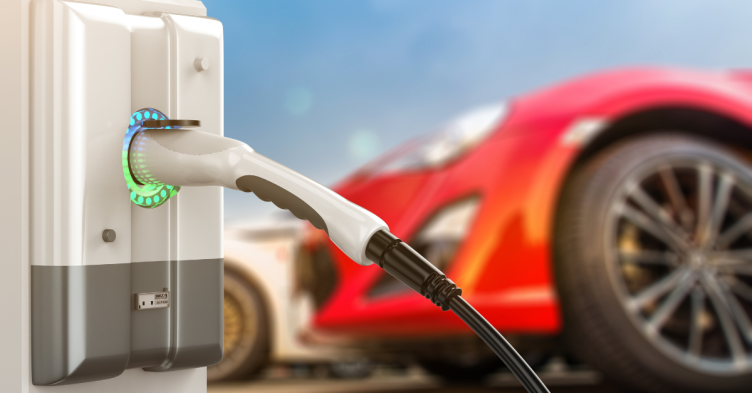Key Takeaways:
- Discover the growing importance of electric vehicle (EV) charging infrastructure.
- Learn about the different types of charging stations and their impact on sustainability.
- Understand how various stakeholders contribute to the EV charging revolution.
Introduction to EV Charging Infrastructure
Electric cars are changing how people get around by providing a cleaner and more eco-friendly option compared to regular gas-powered vehicles. These stations are pivotal in ensuring that EV drivers have the confidence to travel long distances without worrying about running out of power. As the move towards electric transportation gains speed worldwide, creating a strong network of charging stations becomes a crucial focus for city planners, government officials, and businesses, serving as the foundation for this groundbreaking change.
The Environmental Impact of EV Charging Stations
One of the primary environmental benefits of transitioning to electric vehicles is the significant reduction in greenhouse gas emissions. EV charging stations contribute to this reduction by facilitating the widespread adoption of EVs, thereby decreasing the reliance on fossil fuels. The increase in EV adoption is closely tied to the availability and convenience of commercial EV charging station infrastructure. Recent studies have highlighted that a comprehensive charging station network can substantially reduce air pollution levels, particularly in urban areas. The potential for integrating renewable energy sources such as wind and solar power further enhances the promise of greener environments, making EVs an even more environmentally friendly option than their petroleum-based counterparts.
Moreover, the switch to EVs fosters improvements in urban air quality, which is linked to reduced health-related issues caused by vehicle emissions. According to the World Health Organization, air pollution contributes to millions of premature deaths yearly, highlighting the urgent need for cleaner transportation solutions. The transition to electric vehicles supported by an efficient charging infrastructure can thus significantly improve public health and decrease healthcare costs associated with pollution-related illnesses.
Types of EV Charging Stations
Level 1 Charging
Level 1 chargers are typically included when purchasing an electric vehicle and using a standard 120-volt household outlet. They provide a slow yet steady flow of electricity, making them ideal for overnight charging at home, where speed is not a significant concern. Despite their slower charge times, Level 1 chargers are convenient for users who travel short distances daily and can afford extended periods of downtime for charging.
Level 2 Charging
Level 2 chargers are a step up, operating on a 240-volt current similar to that used by household appliances like electric dryers. These chargers are commonly installed in public areas such as office buildings, shopping centers, and parking lots, offering faster charging times to accommodate the bustle of daily life. Depending on the vehicle, a Level 2 charger can fully replenish the battery in a few hours, making it a practical choice for residential and commercial settings.
DC Fast Charging
DC fast chargers stand out for their ability to provide a significant charge quickly, typically reaching up to 80% battery capacity in about 30 minutes. This capability makes them ideal for highway charging stations where drivers need quick turnaround during long trips. The rapid advancements in battery technology and fast-charging capabilities are set to enhance the convenience of long-distance EV travel further, supporting the broader adoption of electric vehicles.
Challenges Facing EV Infrastructure
The path to building and maintaining an adequate EV infrastructure is challenging. One major challenge is the high initial cost of installing charging stations, which can be a deterrent for businesses and municipalities. Additionally, the increased demand for electricity to power these stations poses challenges for existing power grids, necessitating upgrades and improved energy management strategies. Ensuring that charging stations are equitably distributed across urban and rural areas also presents logistical and economic challenges. Addressing these issues is vital to facilitating a seamless transition to EVs.
Another significant challenge lies in the standardization of charging protocols and connectors. With multiple types of connectors and charging standards globally, interoperability poses a barrier to seamless EV adoption. Harmonizing these standards across regions is necessary to simplify the user experience and foster a more inclusive and accessible charging network.
The Role of Governments and Policies
Governments play a crucial role in the proliferation of EV infrastructure by providing financial incentives and establishing regulatory frameworks that encourage investment in sustainable transportation solutions. Policies such as tax incentives, grants, and subsidies have been instrumental in reducing the financial burden associated with deploying charging stations. Additionally, governments are implementing clean energy initiatives that prioritize environmental sustainability, ensuring that EV infrastructure contributes to reducing emissions and promoting energy independence.
Furthermore, international collaboration in policy-making can drive global efforts to standardize charging infrastructure. Cross-border initiatives and agreements can enhance charging system interoperability, creating a cohesive network that supports international EV travel and commerce.
Innovations in EV Charging Technology
The evolution of EV charging technology is paving the way for innovative solutions that enhance the convenience and efficiency of charging infrastructure. Wireless charging technology, which eliminates the need for cables, is on the horizon and promises to revolutionize the user experience. Furthermore, solar-powered charging stations are being developed to provide eco-friendly alternatives that can operate off-grid, ensuring energy availability even in remote locations. These technological advancements will be crucial in driving greater acceptance and utilization of EVs in the coming years.
Additional advancements include integrating blockchain technology to create transparent and secure payment systems. This innovation aims to improve user trust and streamline transactions at public charging stations, making the process seamless and efficient for consumers.
Future Trends in EV Charging
The future of EV charging is set to be characterized by intelligent technology integration and improved user engagement. The development of smart grids will allow for real-time energy management, optimizing the distribution and consumption of electricity while minimizing costs. Artificial intelligence is expected to predict charging demand, ensure availability, and reduce wait times. These advances will drive increased efficiencies across the grid and provide a seamless charging experience for users, further solidifying the role of EVs in sustainable transportation.
Additionally, community-based charging solutions are expected to gain traction, enabling neighborhoods and localities to establish shared charging resources. This trend can democratize access to EV infrastructure, particularly in areas where private installation may not be feasible.
Conclusion
The development of EV charging infrastructure is integral to the transition towards sustainable transportation. Through concerted efforts by governments, private entities, and consumers, the challenges of infrastructure development can be overcome, paving the way for a cleaner, greener future. As innovations continue and more players invest in this burgeoning field, the future of electric mobility looks increasingly promising, heralding a new era in transportation that is sustainable and accessible to all.
By addressing the hurdles and fostering an ecosystem of innovation and cooperation, the vision of an electrified transport network that is efficient, reliable, and environmentally sound can become a reality, benefiting both current and future generations.




